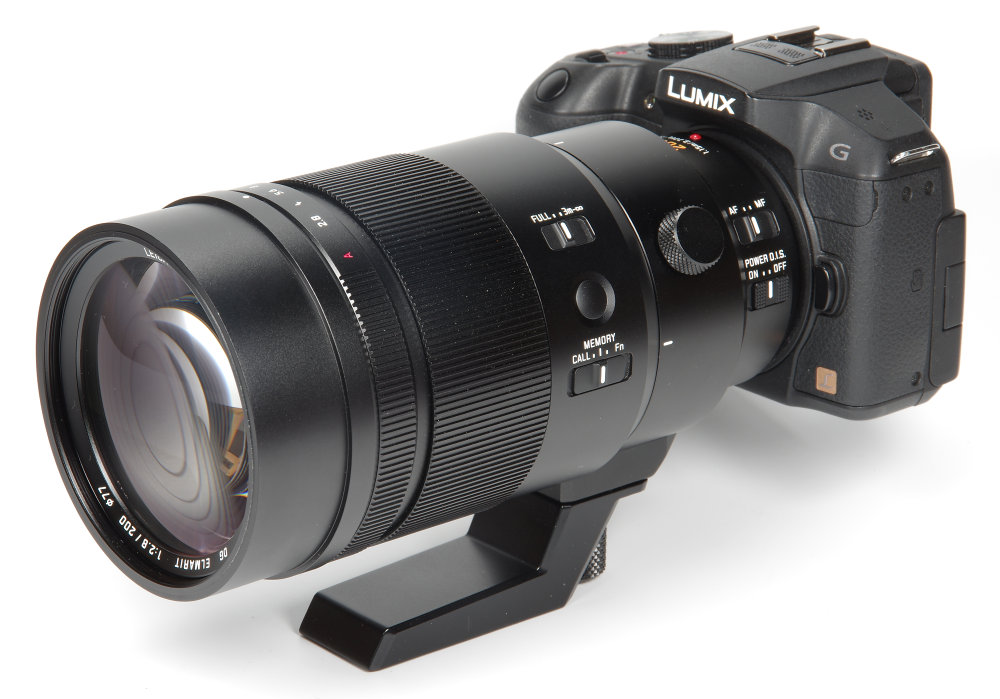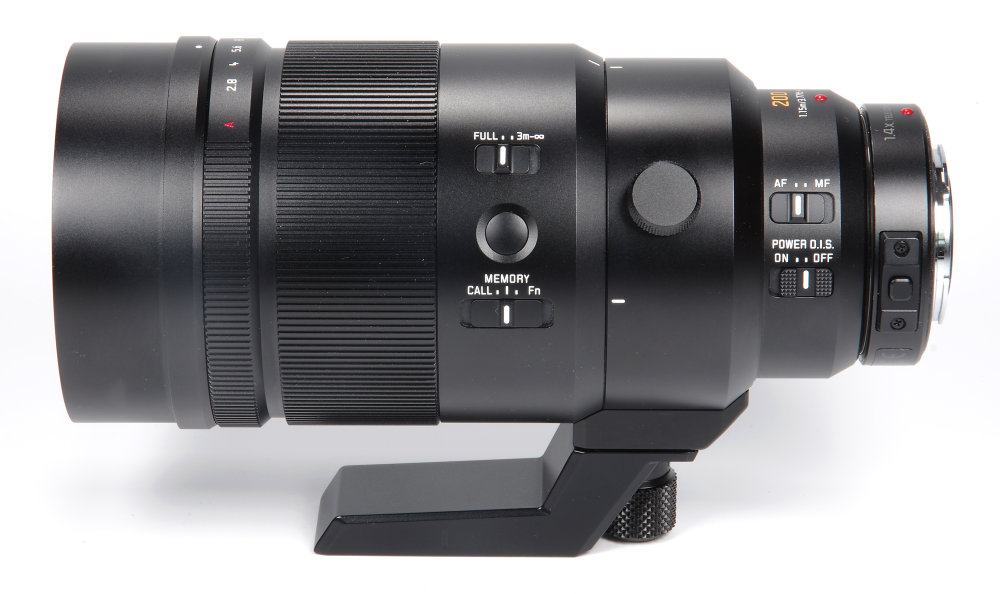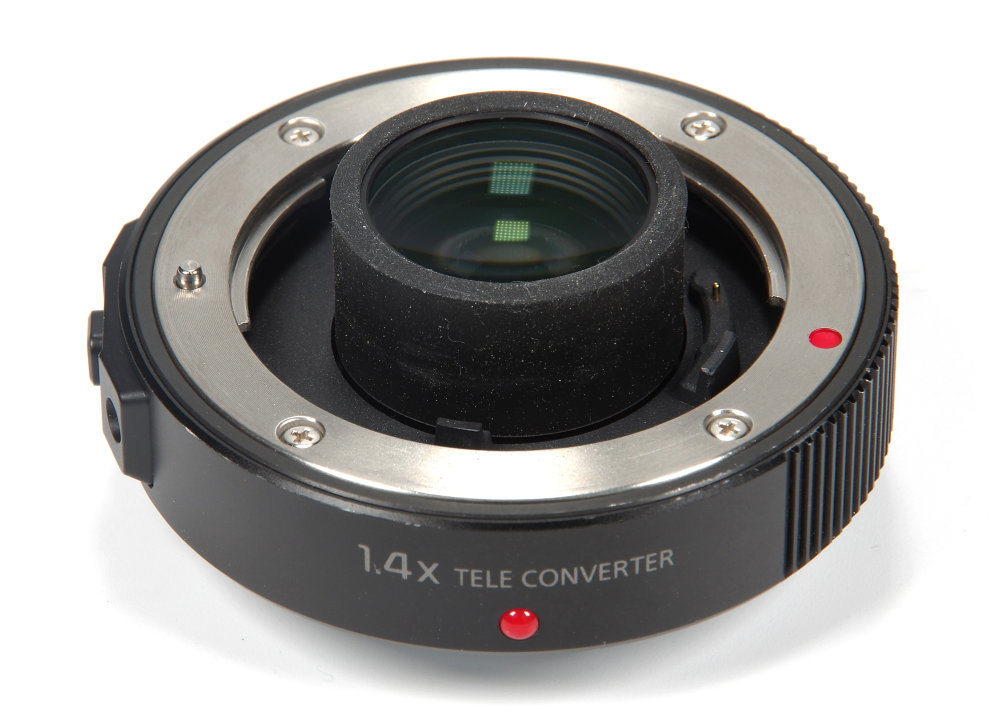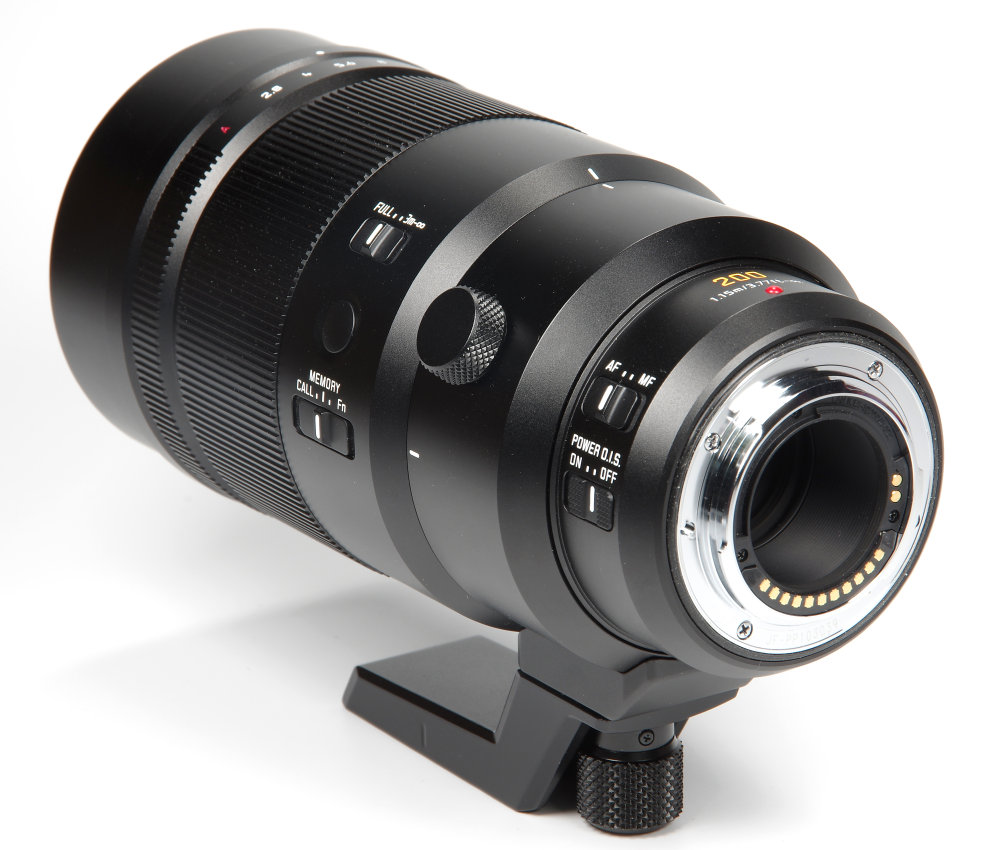Panasonic Leica DG Elmarit 200mm f/2.8 Power O.I.S Review
Panasonic Leica DG Elmarit 200mm f/2.8 Power O.I.S. Handling and Features
This is clearly from the outset a beautifully made lens. All the controls are super-smooth in operation, everything fits together with precision and the overall finish is exemplary. Weighing in at 1245g, this might seem heavy for the format, but consider the alternatives in larger formats and we really have a relatively light package for the intended purposes. There is a standard 77mm filter thread, outside of which the barrel is smooth where it accepts a slide-on lens hood. The hood is secured by a small knurled screw that tightens a band within the hood, firmly and evenly gripping the lens. It's all designed very well and fits perfectly.
Behind here we find a large aperture ring. An A setting is provided should we wish to control the aperture from the camera, or values can be directly set on the ring in 1/3 stop increments. The detents have just the right feel and the ring operates very smoothly.
There is a wide manual focus ring, although little need was found to switch from AF. The AF system locks on very efficiently. Moving closer again to the camera body, we find two switches on the lens barrel. The first is a focus limiter, allowing AF to operate over the full range or restricting it to between 3m and infinity. The second is a Memory switch. This enables a focus position to be retained and recalled by pressing a small button between the two switches. The Fn setting on this switch enables a camera function to be allocated to the button, after which pressing the button will set the function on the camera. This latter feature depends upon the camera body used supporting the function. Focusing is down to 1.15m, giving a maximum magnification of 0.2x.
Closer to the camera body lies the tripod foot and ring. This is very solid and secure and loosening a knurled knob also allows for camera orientation to be set. This works very elegantly, a lovely simple bit of design.
Finally we have two switches on the lens body closest to the camera. The AF/MF switch lies just above an on/off switch for the Power OIS (Optical Image Stabilisation) system. The lens is also rated as being dust, splash and freeze proof, making it ideal for using outdoors in demanding situations.
Optical construction of the lens comprises 15 elements in 13 groups, two of which are Ultra-Extra Low Dispersion. The diaphragm has 9 blades, aiming to improve the quality of the out of focus areas, or bokeh.
1.4x Teleconverter DMW-TC14
This Teleconverter is provided with the lens, turning it into a very useful 280mm f/4. The minimum focus distance remains the same, so magnification is also increased. The converter comprises 6 elements in 4 groups. It adds just 115g to the weight of the lens. The pulling power of this combination is very powerful, having a “35mm-format” equivalent of a 560mm f/4, a very attractive proposition.
Overall handling is very slick, regardless of whether the TC is used or not. In fact, adding the TC seems to make no difference to AF speed or usability in any way. Using the lens in the studio for portraits might not seem the intuitive thing to do, but in fact this works very well. The perspective at the distances required makes excellent head and shoulder portraits. Out in the field, wildlife, nature, landscape, all fall within the types of subjects that can be handled with ease.
Although we do need to remember that shutter speeds will still need to be high to arrest subject movement, here we have a very powerful telephoto lens that handles with the same ease as a much more modest one.
Add your message
Please login here or if you've not registered, you can register here. Registering is safe, quick and free.
photodo Stats
428 MTF tests
74 in-depth photodo reviews
100+ users join each day
Help the lens community by reviewing or rating a lens today via our lens search
Latest Lens Reviews
- Chinon 28mm f/2.8 Vintage Lens Review
- Canon EF 70-200mm f/4L IS II USM Lens Review
- Samyang AF 85mm f/1.4 EF Review
- Sigma 70mm f/2.8 DG Macro Art Review
- Samyang AF 24mm f/2.8 FE Review
- Meike 50mm f/1.7 Review
- Tamron 70-210mm f/4 Di VC USD Review
- Lensbaby Burnside 35mm f/2.8 Review
- Asahi Super Takumar 50mm f/1.4 Review
- Asahi Super-Multi-Coated Takumar 135mm f/3.5 Review




